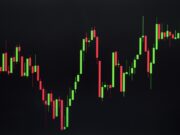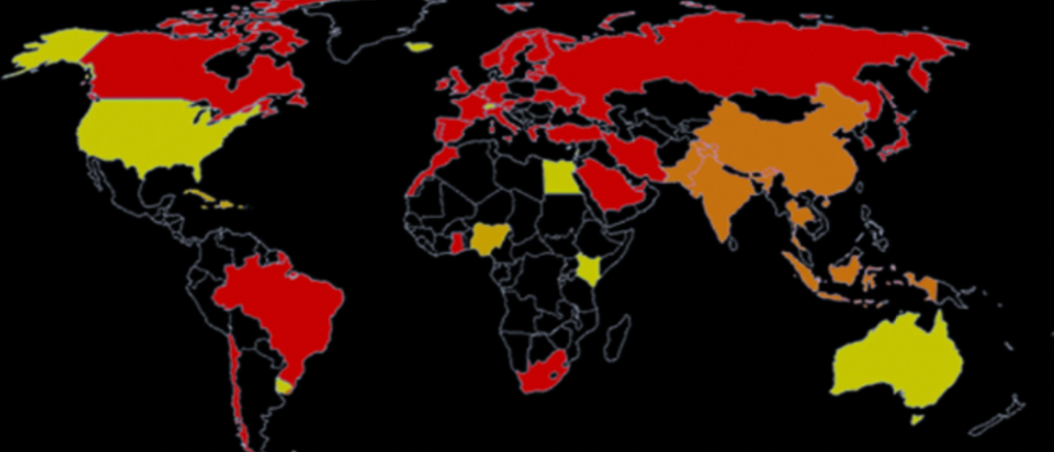Gas prices have been falling for more than 50 days in a row, providing drivers some much-needed respite at the pump. However, no one has yet to break out the champagne. While gas costs have been a significant contributor to the recent wave of unprecedented inflation, economists caution that there are still several variables that will prevent prices across the board from making sharp declines anytime soon.
The oil forecast, overall, is still mostly unclear. The average price of a gallon of gasoline has decreased about a dollar from the peak in June. Still, the longer-term prognosis for oil indicates the continuation of supply concerns. A senior investment strategist, Rob Haworth, said, “Russia-Ukraine is a factor, but… we had tight supplies coming into this. We’d love to see the conflict in Russia and Ukraine end. But I think we still face a global economy that is short of oil in the near term.”
What more should we keep in mind as gas prices start to ease? As we’re not out of the woods yet, how should our expectations look? Join me for some more details in the full report here:
The unwillingness – or inability, according to some oil analysts – of members of the Organization of the Petroleum Exporting Countries (OPEC+) to significantly increase levels of production is restricting the amount of new oil that is entering the market, aside from Russia’s conflict with Ukraine and the sanctions that have disrupted its oil exports. The OPEC+ oil cartel and its allies last week revealed a minor increase in September output of 100,000 barrels per day, which was less than anticipated.
Another problem is the U.S. producers’ reluctance to invest large sums of money in the extraction and, more importantly, refinement of fossil fuels when long-term policy objectives indicate dwindling profits in the face of a switch to renewable energy. Jeff Klearman, a portfolio manager with ETF company GraniteShares, pointed out, “There is a structural problem with the oil and gas industry, and that has to do with refining capability. Oil companies, not just in the U.S. but globally, have not expanded their refining capacity. That continues to pressure gas prices.”
Meanwhile, Peter McNally, an economist with investment company Third Bridge, stated that this was a case of “misunderstood criticism” regarding the rising earnings of refiners. He pointed to investments being made to convert existing refining plants to process biofuels. McNally added, “These companies are investing for the energy transition.”
Since the pandemic’s arrival, a rise in demand for physical commodities has thrown supply systems out of control, clogging logistics and leading to significant pricing distortions. According to David Dollar, senior scholar at the Brookings Institution, “Inflation is primarily caused by excessive demand chasing too few goods.” Due to this demand, Chinese factories have abruptly shut down, resulting in cascading marine traffic congestion at Pacific ports. There were not enough people to drive the vehicles needed to deliver the merchandise from the docking ships to the warehouses and, subsequently, to the consumers.
Despite predictions that inflation would probably persist through 2023, there are otherwise some very encouraging signs. In addition to spending less to travel and conduct errands, high-flying airfares may return to reality, and grocery customers may experience a decrease in prices if manufacturers aren’t required to spend as much on transportation to get their products onto shelves. As the expense of transportation input continues to decline, there would likely be some price rivalry in the food industry.
There is a perception that the earlier period of standstill is easing, even though supply chain bottlenecks still exist in some industries. Additionally, there have been recent, well-publicized cases of retail price reductions: Walmart (WMT) and Target (TGT) claimed they had to lower prices to eliminate sizable quantities of unsold inventory. This started to occur in tandem with Americans turning back to spending on discretionaries like dining out and live events.
There is also fresh optimism that President Joe Biden may reverse one or more of the punishing tariffs that President Trump imposed on China in an effort – as experts agree – to pressure Beijing into buying more American products and vital commodities. According to a study by the Peterson Institute of International Economics, removing those tariffs imposed by Trump alone could eventually reduce inflation by as much as 1.3%, saving the typical American household close to $800 annually.
Read Next: America is going mad—is this next?
America is definitely going a little mad…
Some states are threatening to break away. The rich are fleeing. The wealth gap is soaring.
According to a recent article in the New York Times, people are driving more recklessly than ever… and drinking more alcohol than ever too.
And that’s just the beginning…
Altercations on airplanes are now at all-time highs. So are murder rates. And violent crime is soaring across the board. Students are more disruptive than ever. Hate crimes have hit a 12-year high, according to the FBI.
The question of course is:
Where is this all headed… and what’s coming next?
Well, one of the wealthiest and most successful entrepreneurs in America has a very clear answer you’re unlikely to hear anywhere else…
Bill Bonner is a 73-year-old son of a tobacco farmer, who now owns six large properties in South America, Central America, and the U.S… plus three in Europe.
Bonner is also one of the most humble and thoughtful men in the world today. He’s the author of three New York Times bestsellers… and has built several homes with his own hands, using ancient building techniques.
I’m telling you about Bonner today because has just come forward with an important message…
What he calls: His 4th and Final Warning.
It’s worth paying attention to, because Bonner has made 3 other big macro-economic predictions in his career… and each one proved to be exactly right.
Today, Bonner says we are headed towards a very difficult period in the U.S.… one of our most difficult times ever… which will result in something he calls: “America’s Nightmare Winter.”
What does that mean, exactly—and how could it affect you and your money?
Bonner doesn’t claim to have all the answers–but he recently went public with the fascinating analysis, recorded at his 60-acre property overlooking one of Europe’s most beautiful rivers.
He says:
“I believe it falls on someone like me to warn people… clearly… and without distraction.
“I can do this now because I’m too rich to care about money… and too old to care about what anyone says about me.”
And in this analysis, Bonner explains exactly how he believes this difficult period will play out, and even more important: The 4 Steps every American should take right now to prepare.
Get the facts.
Learn how to protect yourself and get a peek inside Bonner’s spectacular European property.
We’ve posted Bonner’s full analysis and his 4 recommended steps on our website.
You can view it free of charge here…
Sincerely,
Mike Palmer
Founding Partner, Stansberry Research
P.S. Is Bonner right? I can’t say for sure… but Stephen Schwarzman, the CEO of Blackstone (America’s biggest private equity firm), recently went public on CNN with almost the exact same warning.
Get the full story here before it appears anywhere else, and learn what you can do to protect and even grow your money during this difficult time. Click here to view













